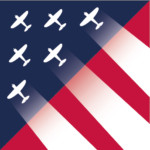U.S. Navy Exercise Simulated Pearl Harbor Attack 18 Months Before It Happened

Fleet Problem XXI was a U.S. Navy exercise conducted in the Pacific near the Hawaiian Islands in April and May of 1940. Like similar exercises going back to 1923, it tested ideas of offensive and defensive naval warfare. Several earlier exercises had considered Japan a likely enemy, but with World War II already underway in Europe and tensions with Tokyo rising, Japan was clearly in the sights of U.S. Navy leaders for Fleet Problem XXI.
It showed that Hawaii could be attacked, and also defended — a lesson that was of little use on December 7, 1941, when Japan attacked Pearl Harbor without warning and launched the U.S. into World War II.
But the wide latitude to act that was given to commanders during all of the Fleet Problems, including XXI, was retained and used to significant effect during World War II. On several occasions in Fleet Problem XXI, commanders demonstrated “great flexibility not only in organization, but also in command and control, communications, planning, and staff work”, according to a study by historian Albert Nofi. The captain of one of the aircraft carriers involved in the war game, USS Yorktown, said success in battle was more likely under a broad mandate. Two other carriers were involved, Lexington and Saratoga.
Fleet Problem XXI involved two opposing forces, the stronger “Purple”, playing the part of Japan, and the weaker “Maroon” playing the U.S. The idea was not to “win” but to learn.
It was played in two stages, according to Lt. Cdr. James M. Grimes, a historian. “The first…was designed to afford training in making estimates and plans; in scouting and screening; in the coordination of various types of fighting units; in employing standard and fleet dispositions; and finally to train the opposing forces in decisive engagement.”
The second stage “was designed to afford training in the scouting, screening, communications, coordination of types, protection of a convoy, seizure of advanced bases and finally, decisive engagement.”
Aircraft were used in two minor scenarios. One showed the importance of closer cooperation between the Army and the Navy in defending the Hawaiian Islands; the other showed that PBY patrol planes attacking ships at low level were vulnerable to enemy fire, but were impressive in the job of tracking ships at high altitude.
Fleet Problem XXI, the last such exercise before the U.S. entered the war, was run in the absence of a number of ships that had sailed to the Atlantic under the U.S. Neutrality Patrol. The patrol was initiated shortly after Germany’s invasion of Poland on Sept. 1, 1939, to monitor movements of ships of warring nations.
An earlier exercise, Fleet Problem XIX in April and May, 1938, simulated an attack by carrier-based planes on Hawaii – almost exactly what Japan would do three years later. Planes from the USS Saratoga successfully “hit” the Army’s Hickam and Wheeler airfields and the Navy’s airfield at Pearl Harbor, as well as the radio station at Wailupe, and returned to the ship.
Fleet Problem XX, which followed in February, 1939, in the Caribbean, employed the carriers Yorktown and Enterprise. Despite their inexperience, the ships’ crews were credited with growing efficiency and contributing to the success of the exercise.
After the conclusion of Fleet Problem XXI on May 17, 1940, the Fleet was ordered to remain in Hawaii as a signal to Japan. Adm. James O. Richardson, Commander in Chief of the U.S. Fleet, strongly objected, saying the Pacific Fleet would be the prime target of an attack by Japan. He was relieved of command in February 1941, for saying so, but the devastating Pearl Harbor attack ten months later proved him right.
=============================

